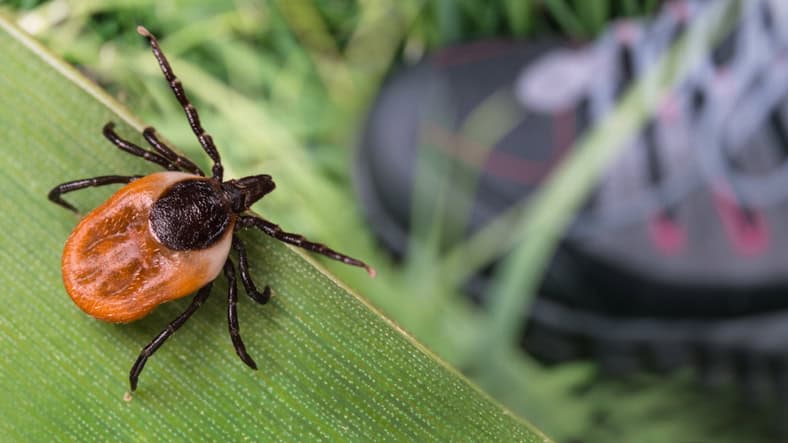As school days wind down and summer vacation gets underway, parents hope their children will spend more time out in nature soaking up the sun. While Alzein Pediatrics reminds you to slather your kids in sunscreen to protect them from harmful rays, we also bring a reminder to protect them from the other things they’ll encounter in the great outdoors. In the upper Midwest and all around the greater Chicagoland area, one of those potential threats lurking in the tall grass is the black-legged deer tick—the single vector for Lyme disease.
Lyme disease is a particular kind of bacterial infection that impacts the human body in a range of ways. The infection can begin as a mild rash and, if left untreated, can cause a range of muscular, joint, and nervous system problems. Not every black-legged deer tick necessarily carries the Borrelia bacteria, but the ticks commonly come into contact with the bacteria when feeding on other wildlife, deer and rodents in particular. When a tick then attaches to and feeds on a person, that Borrelia bacteria can travel into the bloodstream where the infection will spread.
One of the challenges of Lyme disease is that ticks attached to the body can go unnoticed if we are not vigilant. Even as an adult, ticks are about 3mm round, about the size of a sesame seed.
Another problem is that it takes time for Lyme disease to show symptoms. This means the infection can get a good head start before you become aware of the problem. Lyme disease also has a range of symptoms that don’t always present in a standard way. While many people experience a mild rash, often a “bullseye” rash around the bite area, some do not develop a rash, or develop it later in the infection. Eventually, the infection will become noticeable, as symptoms progress to joint stiffness and muscle weakness. However, these symptoms can take weeks or even months to present.
Early intervention offers the best health outcomes, and Lyme disease symptoms typically resolve after a course of antibiotics. For antibiotic treatment to be successful, patients need to be treated as quickly as possible. Some patients complain of lasting symptoms, sometimes called “chronic Lyme disease,” but doctors don’t fully understand why some symptoms persist in some patients, even when the bacterial infection has been treated. Fortunately, a majority of children treated for Lyme disease promptly show complete recovery within 6 months of treatment.
When going into nature, dress everyone in light colored clothing, long sleeves and long pants. Tuck pants into socks, and wear close-toed shoes to expose as little skin as possible. Wear hats. Apply an insect repellant that contain DEET or picardin to clothing. Stay on the designated, tended paths. Keep out of taller grass and foliage areas, where ticks tend to hang out.
These preventative measures don’t eliminate the need to check for ticks after your outdoor adventures. Be vigilant in checking your kids, pets, and yourself for ticks after encountering nature. Check the places ticks like to hide: behind your joints, between fingers and toes, around the ankles, behind the ears, in the hair, and anywhere clothing bunches up or presses against the body. If you do see a tick on your child – or yourself – remove it using tweezers, save the tick in an airtight container, and disinfect the area of the bite with soap and water.
When ticks are removed within a few hours of attaching, the risk of infection is very low; after 24 hours, the risk of infection increases dramatically. If you find a tick on your child and you’re not sure how long it’s been there, follow the steps above and bring your child and the tick to Urgent Care. We may order blood tests to determine whether your child has been infected and antibiotics should be started.
Being in nature at any time of year is good for your child’s physical, emotional and behavioral health. Studies show that being outside decreases the incidence of anxiety and depression, keeps children at a healthier weight and improves their executive thinking. With a little advance preparation, you can have a wonderful time in the woods without bringing home any hitchhiking ticks.
Do you have questions about Lyme disease or other summer illnesses? Message your Alzein Pediatrics provider through your patient portal and we’ll be happy to help!


